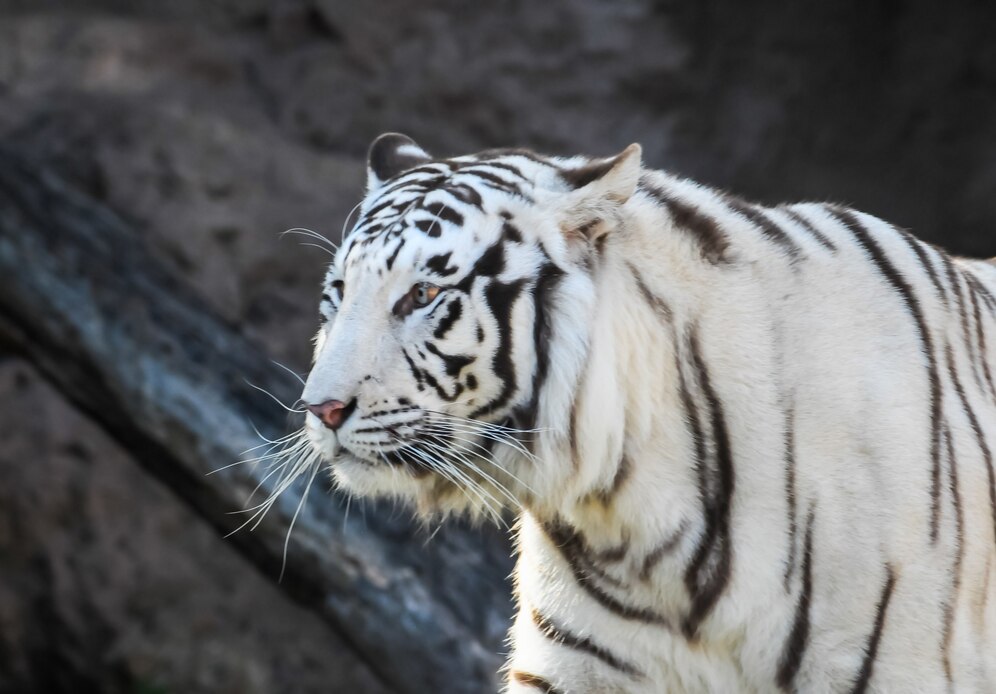White animals are truly a wonder of nature! Their snowy white fur, feathers, or skin help them blend into their cold, icy homes. From the Arctic to the deep oceans, white animals are a special part of our world. They can be found in some of the coldest places on Earth, where their white coats help them survive.
Some white animals, like the polar bear and the Arctic fox, are experts at hiding in the snow. Their white color makes them invisible to other animals and helps them stay safe. Whether they are big or small, these white animals are amazing to look at and learn about!
What Are White Animals and Why Are They So Special?
White animals are creatures that have white fur, feathers, or skin. These animals are unique because their color helps them live in some of the coldest places on Earth. In nature, white animals often use their white coats to hide from predators or to stay warm in freezing temperatures. This is why many of them live in places like the Arctic, where the snow and ice cover everything.
The color white can be a great advantage for some animals. It helps them blend into their surroundings, making them harder for other animals to spot. For example, a polar bear in the snow is almost invisible to prey, allowing it to hunt more easily. That’s why white animals are not only beautiful to look at but also have special traits that help them survive in tough environments.
In many ways, the white coats of these animals are a part of their magic. Without their white fur, they might struggle to survive in their habitats. Whether it’s for camouflage or warmth, white animals have evolved to thrive in some of the most extreme conditions on Earth.
Polar Bears: The Kings of the Snowy World

Polar bears are one of the most famous white animals. These large mammals are found in the cold Arctic regions, where they survive on ice and snow. Their fur is actually translucent, meaning it looks white to us, but it helps them blend into the snowy landscape. Beneath their fur, polar bears have black skin, which helps them absorb heat from the sun.
They are great swimmers and often hunt for seals near the ice. Polar bears use their thick fur and layer of fat to stay warm in freezing temperatures. They are powerful animals that have adapted to life in one of the harshest climates on Earth. While they are white in color, they are strong and dangerous when it comes to hunting and protecting their territory.
In addition to their camouflage, the size of polar bears also helps them survive. They are huge animals, with some reaching over eight feet long. Their size, combined with their white fur, makes them one of the most impressive animals in the Arctic. Seeing a polar bear in the wild is a rare and unforgettable experience.
Arctic Foxes: Masters of Winter Camouflage
Arctic foxes are small, clever animals that live in the coldest parts of the world. In winter, these foxes grow a beautiful white coat that helps them blend into the snowy environment. Their white fur acts like camouflage, making it hard for predators to spot them. However, in the summer, their fur changes to a brown or gray color, helping them blend into the rocky tundra.
These foxes are very hardy animals, built to survive the cold temperatures of the Arctic. Their thick fur keeps them warm during the long winters. They also have a thick layer of fat that helps keep the cold out. Arctic foxes are not only masters of camouflage but also excellent hunters, catching small animals like lemmings to survive.
Unlike many other animals, the Arctic fox’s coat color changes with the seasons. This helps them stay hidden from both prey and predators, ensuring their survival. Whether they’re white in the winter or brown in the summer, Arctic foxes are well adapted to life in the freezing Arctic.
white animals Tigers: Beautiful, Rare, and Mysterious

White tigers are a rare and stunning variation of the regular tiger. Unlike the usual orange tigers, white tigers have a pale coat with black stripes. They are not albino but have a genetic condition called leucism, which causes their fur to be lighter than normal. This rare trait makes them both beautiful and mysterious.
While white tigers are not found in the wild, they are bred in zoos and animal reserves. These tigers are famous for their striking appearance, with their bright white fur and crystal blue eyes. Although they look delicate, white tigers are just as strong as their orange cousins and are powerful hunters in their own right.
Because of their rare appearance, white tigers have become a symbol of mystery and beauty. They are often featured in zoos and wildlife parks, where visitors can marvel at their beauty. However, breeding white tigers can be controversial because it often involves inbreeding, which can lead to health problems for the animals.
Meet the Beluga Whale: A Giant white animals Ocean Friend
Beluga whales are fascinating white animals that live in the cold waters of the Arctic and sub-Arctic regions. These whales are known for their striking white color, which helps them blend into their icy surroundings. Unlike other whales, belugas have a unique “melon” on their heads, which gives them a rounded appearance.
These whales are excellent swimmers, and their white skin allows them to move through the icy waters without being seen by predators. Beluga whales are also very social animals and often travel in groups called pods. They communicate with each other using a variety of sounds, including whistles, clicks, and chirps.
The beluga whale is an important part of the Arctic ecosystem. These whales are at the top of the food chain, feeding on fish, crustaceans, and other sea creatures. Their white color, combined with their intelligence and social behavior, makes belugas one of the most unique and interesting white animals in the ocean.
The Arctic Hare: A White Animal That Loves the Cold

The Arctic hare is another amazing white animal that lives in the harsh, snowy climates of the Arctic. This hare is well-known for its thick, white fur that covers its body all year round. The white fur helps the Arctic hare stay hidden from predators like wolves and foxes. It also provides warmth in the freezing cold of the Arctic tundra.
Even though their fur is white all year, the Arctic hare is fast and agile. It can leap great distances, helping it escape danger when needed. In the winter, the hare feeds on woody plants and moss, while in the warmer months, it enjoys grasses and flowers. This diet helps the Arctic hare stay healthy and strong in its cold environment.
Conclusion
White animals are not only beautiful, but they are also fascinating because of how well they are adapted to their surroundings. Their white fur or feathers help them stay hidden in the snow and ice, keeping them safe from predators. This clever camouflage makes them special and helps them survive in the coldest and harshest environments on Earth. From polar bears to white tigers, these animals are a wonderful part of nature’s design.
In addition to their appearance, white animals are strong and smart, each having their own way of thriving in difficult conditions. Whether it’s for warmth, protection, or hunting, white animals have evolved to be experts in surviving where others might not. Their ability to adapt is truly amazing, and they remind us how nature’s creatures can be so unique and powerful.



